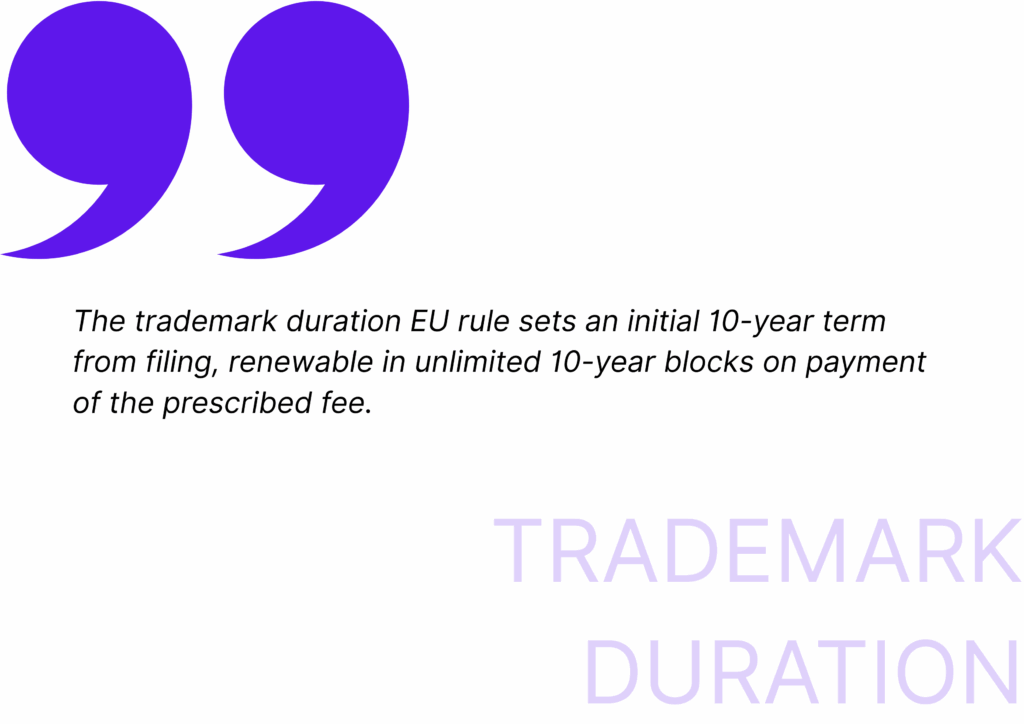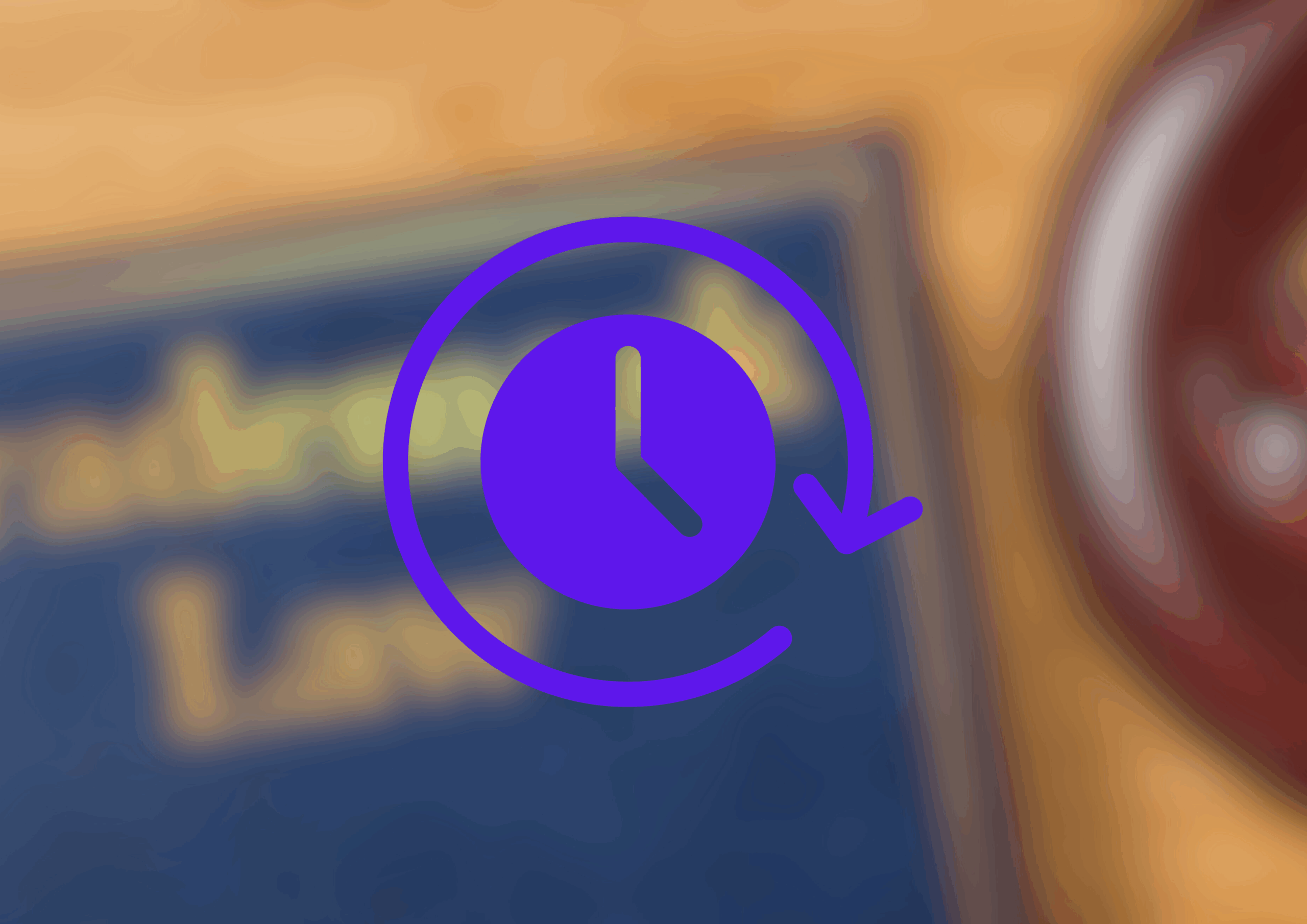The trademark duration EU rule sets an initial 10-year term from filing, renewable in unlimited 10-year blocks on payment of the prescribed fee.
Why ten years matters
However, founders often confuse registration date, renewal date and use requirements. Guidance can therefore sound contradictory.
Moreover, knowing the trademark duration EU baseline helps you align commercial milestones with legal ones. An EUTM confers EU-wide exclusivity for ten years, but the trademark duration silently resets only when you file the renewal application. Miss that window and your mark slips into a six-month grace period with a 25 % surcharge. After that, cancellation is automatic, and competitors can pounce.
Renewal grace periods explained
Consequently, EUIPO opens the renewal window exactly six months before the expiry date and closes it on the last day of that month. The Office sends reminders, but they have no legal force; liability rests with the owner. Ideas spark progress. Smart founders calendar the opening date, not the deadline.
Additionally, if the grace ends without payment, only a restitutio in integrum request—requiring evidence of “all due care”—can revive the mark, and that succeeds rarely (see EUIPO). The EPO applies a similar test for patents, so precedent is clear.

Proof of use and revocation
Notably, holding a registration is not enough to ward off every attack. After five consecutive years of non-use, an EUTM becomes vulnerable to revocation for the unused goods or services. Competitors often monitor dormant portfolios and strike immediately after the grace period lapses, wiping out years of branding investment with a single filing.
Similarly, evidence of genuine use need not be massive, but it must be precise. Invoices, packaging, website captures and customs declarations bearing the mark all help. Courts look at territorial spread within the EU, commercial volume and frequency; a token sale will not suffice. Preparing a “use file” from day one saves frantic document hunts later.
Crucially, partial revocation trims only unused classes or goods. That means you can keep protection for active product lines while shedding dead wood and reducing renewal fees. Proactively narrowing the list during renewal demonstrates good faith and impresses investors who read due-diligence reports.
Renewal strategy and common pitfalls
Meanwhile, flexible budgeting beats heroics at 23:59 on deadline day. Late-night filings breed mistakes.
Furthermore, why risk forfeiting your badge of origin for the price of one conference ticket? Schedule reminders in multiple calendars, allocate the fee months ahead and instruct a professional if in doubt.
In short, the numbers are public and predictable; they only hurt when discovered late.
| Item | Note |
| Standard renewal fee (one class) | EUR 850 (see EUIPO) |
| Each additional class | EUR 50 |
| Late renewal surcharge | 25 % of total fee |
| Restoration request | EUR 200 plus proof of due care |
For instance, Berlin-based energy startup GreenPulse registered its EUTM in May 2015. By marking 1 November 2024—the opening of its renewal window—it avoided the Christmas crunch that sinks many budgets. Payment went through on 3 November, and the company received confirmation within 48 hours.
Budgeting hacks for SMEs
Beyond mere reminders, micro-enterprises can apply for EUIPO’s SME Fund vouchers, which reimburse up to 75 % of trademark fees. Planning renewals to coincide with funding windows maximises cashflow and pleases investors.
Equally, staging renewals—keeping the EUTM alive while pruning barely-used national marks—cuts redundant fees. Consistency between invoices, bookkeeping and tax filings prevents auditors querying “phantom” assets.
Remarkably, automated docketing tools now integrate with EUIPO’s API, sending prompts to Slack or Microsoft Teams. A subscription costing less than one hour of lawyer time can eliminate deadline drama.
Ultimately, a written renewal policy, signed off by the board, converts individual memory into institutional process. Investors read that as maturity, and acquirers assign it a premium.
Post-renewal enforcement
Next, renewal is only half of the endurance race; active policing keeps the monopoly alive. Watch services flag confusingly similar filings in real time, letting you file observations or oppositions within EUIPO’s tight deadlines. The modest subscription fee undercuts the cost of future re-branding.
Conversely, customs recordals complement renewal by enabling border seizures of knock-offs. EU Regulation 608/2013 lets right-holders lodge a single application covering all EU entry points. Updated registration certificates prove validity instantly, accelerating detentions and discouraging infringers from testing your vigilance.
Importantly, renewal certificates also convince online marketplaces to remove copycat listings. Platforms such as Amazon Brand Registry and Alibaba IPP ask for expiry dates; an overdue mark triggers automatic rejection. Keeping paperwork current therefore translates into direct sales defence for e-commerce-heavy startups.
Precisely, EU courts consider the renewal status when calculating damages in infringement suits. A current registration demonstrates ongoing economic interest, undermines claims of acquiescence and supports higher compensation. Judges may also award costs for renewal fees paid in the course of litigation, effectively reimbursing diligent owners. Skipping renewal therefore weakens your litigation armour and can shave thousands off any future judgment.
Finally, remember that licensing revenue tracks the perceived health of a portfolio. Prospective licensees scrutinise renewal history before signing; missed payments signal operational risk. Demonstrating an unbroken chain of timely renewals strengthens negotiation leverage and boosts royalty rates.
Timely renewal costs far less than losing your mark.
How soon before expiry can I renew?
Generally, six months before the exact expiry month; EUIPO accepts payment any day within that window.
Is proof of use needed at renewal?
Usually, no. Evidence is required only if someone files non-use revocation later (see EUIPO).
Does Madrid designation length differ?
No. International registrations designating the EU follow the same ten-year cycle, renewable via WIPO.



